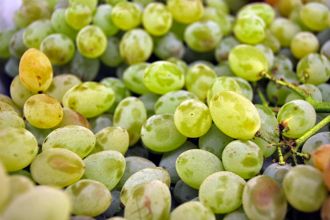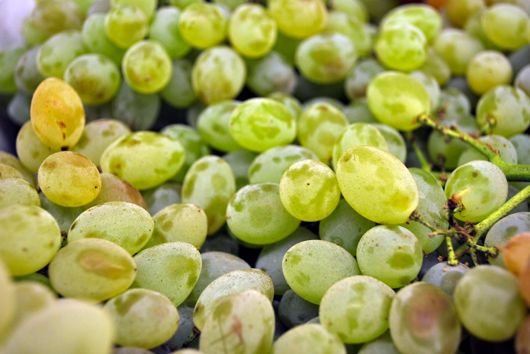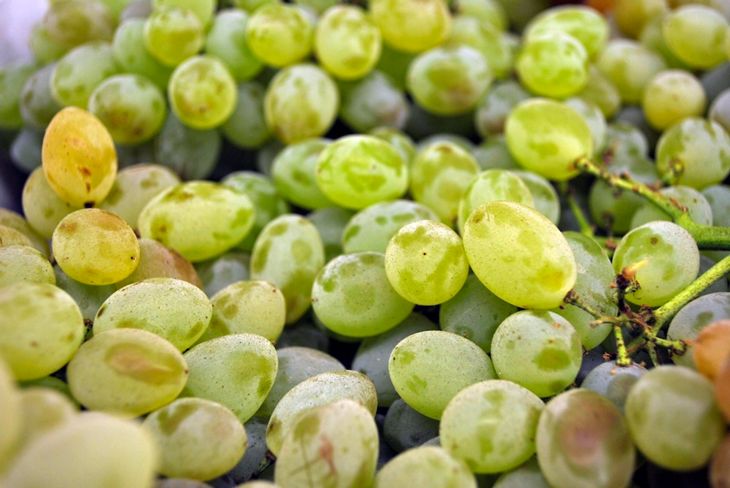Growing Seedless Grapes


Seedless grapes are easy-to-grow and are healthy, easy-to-eat snacks. Learn what makes grapes seedless and find tips on growing seedless grapes.
Grapes are the "queen of fruits" in many parts of the world. They are a treasure trove of anti-inflammatories, vitamins, minerals, and nutrients – including antioxidants, found in grape skins. They're low in fat, calories, and are cholesterol-free, so there's no guilt when you're snacking on grapes!
Seeded grapes and seedless grapes can both be grown at home, but growing seedless grapes is more popular for how easy they are to grow as well as harvest and snack on.
How are seedless grapes 'seedless'?
Putting common fears at ease, seedless grapes are not created in a lab through genetic modification. The biological occurrence known as "stenospermocarpy" is what causes the berries of grape vines to be seedless. More accurately, this is a mechanism in the plant that generates underdeveloped seeds, or tiny seeds that are barely visible, within the fruit.

The vines still require pollination to develop fruit, but the grape's seedlessness means the plants are not going to propagate themselves from seed. Most grape cultivars are propagated from grafts or rooted cuttings anyway, which ensures your grapes have the characteristics you expect from the variety you select to plant.
General Types of Grape Vines
- Table Grapes (seeded or seedless)
- Wine Grapes (commonly seeded)
- Muscadine Grapes (commonly seeded)
The most common seedless grapes are table grapes. It's possible to use varieties of table grapes for juice and even wine, but they are ideal for fresh-eating. Their sugar content is lower than that of a traditional wine grape, and their flavor is more appreciable when eaten fresh.
So, now that you know a little bit about them, why not grow a backyard vineyard of your own healthy seedless grapes?
Here are a few seedless grape varieties we recommend for the backyard vineyard:
 On Sale
Reliance Seedless Grape
Starting at $15.99
On Sale
Reliance Seedless Grape
Starting at $15.99
 On Sale
Marquis Seedless Grape
Starting at $21.99
On Sale
Marquis Seedless Grape
Starting at $21.99
 On Sale
Saint Theresa Grape
Starting at $14.99
On Sale
Saint Theresa Grape
Starting at $14.99
 On Sale
Somerset Seedless Grape
Starting at $16.99
On Sale
Somerset Seedless Grape
Starting at $16.99
 On Sale
Thomcord Seedless Grape
$15.99
On Sale
Thomcord Seedless Grape
$15.99
 On Sale
Lakemont Seedless Grape
Starting at $15.99
On Sale
Lakemont Seedless Grape
Starting at $15.99
 Joy Grape
$21.99
Joy Grape
$21.99
 On Sale
Flame Seedless Grape
Starting at $21.99
On Sale
Flame Seedless Grape
Starting at $21.99
Some seedless grape varieties may develop tiny seeds/vestigial seeds or seed remnants/traces depending on the variety and the climate in which they are grown. While some seed development is attributed to cross-pollination by seeded grapes, this is not so likely.
Growing Seedless Grape Vines
Choose the right site. Pick a sunny southern location with loamy, fertile soil and very good drainage. Mark off spots approximately eight feet apart and install an arbor or trellis post at each spot*.
Dig the hole. Assess the size of the vine's root system and dig a hole approximately twice as large. Place the grapevine in the hole, spreading out the roots, and back-fill with soil until the hole is three-quarters full. Water to settle the soil. Finish filling with soil and water again.
Prune after planting. Cut back the plant to two buds. These should be encouraged to grow in opposite directions along the trellis. Each successive year, prune off old/dead canes to leave room for the most vigorous canes.
Water as needed. New plants need more water than established vines; water weekly for the first year, especially in hot/dry spells.
*Once you decide to grow your own seedless grapes, remember that the vines require a support system – like a sturdy fence, arbor, or trellis – as they grow and mature. The support should be in place before planting, or very soon after.
» Watch this great "DIY" video from the Oklahoma State University: Building a Grape Trellis.
If you don't have room to turn your backyard into a vineyard, The Fruit Gardener's Bible book has wonderful instructions on growing grapes in containers – perfect for small-space gardening!
- Article Categories:
- How To Grow
- Product Features








































